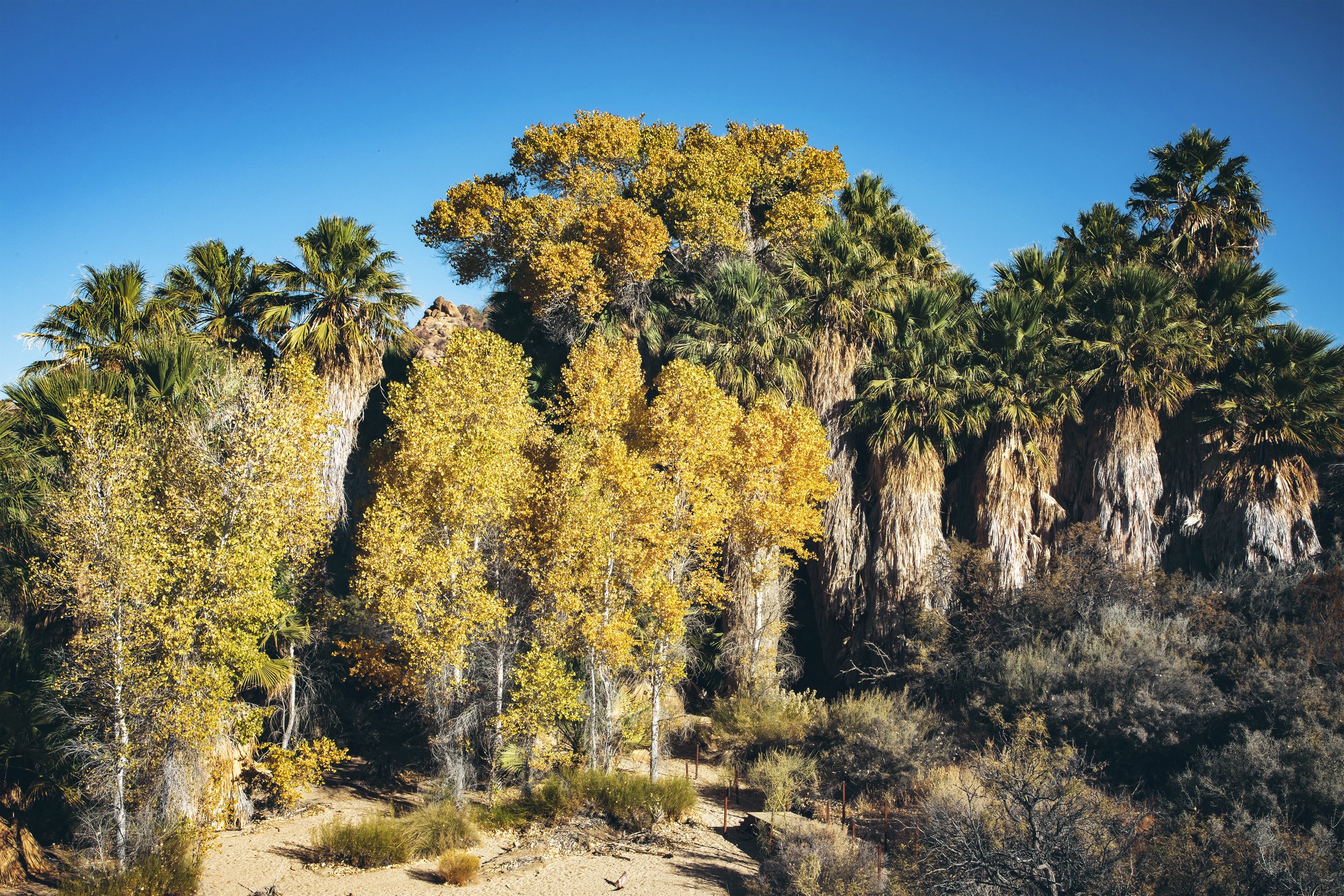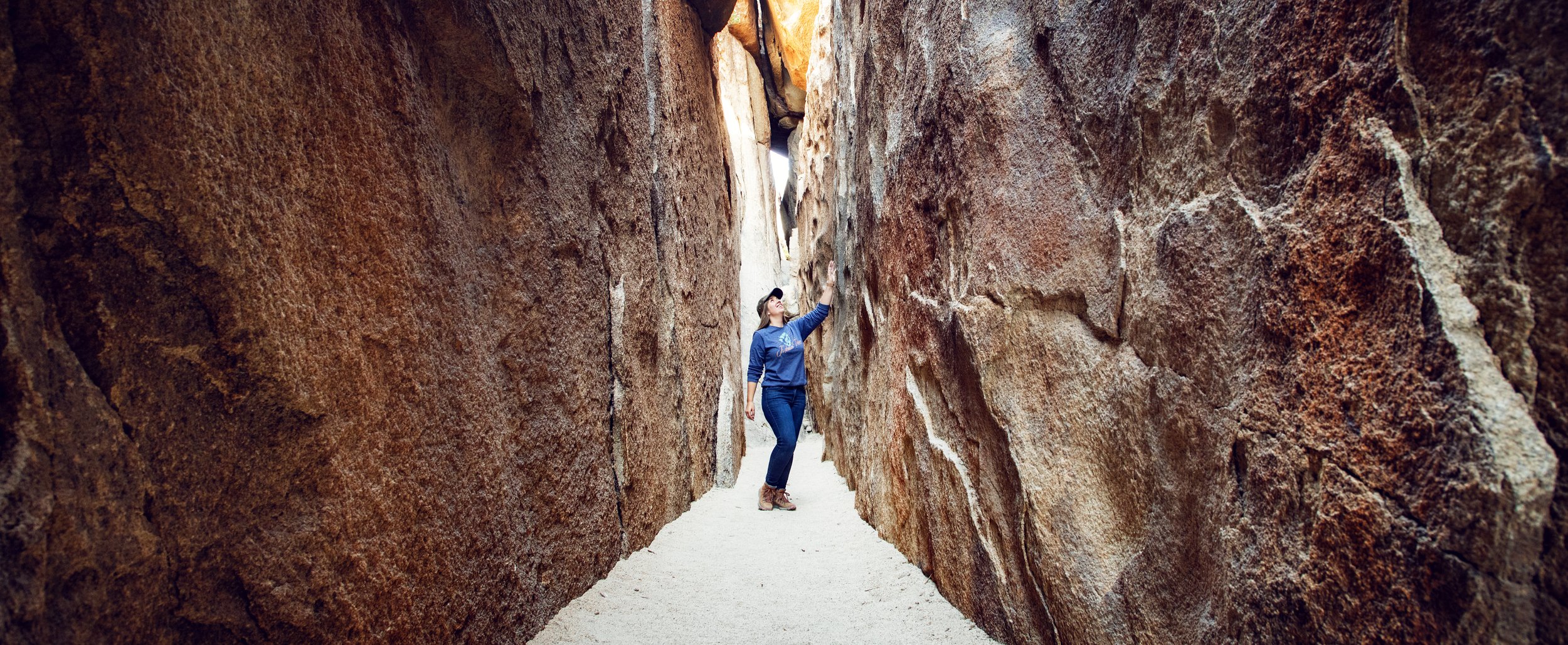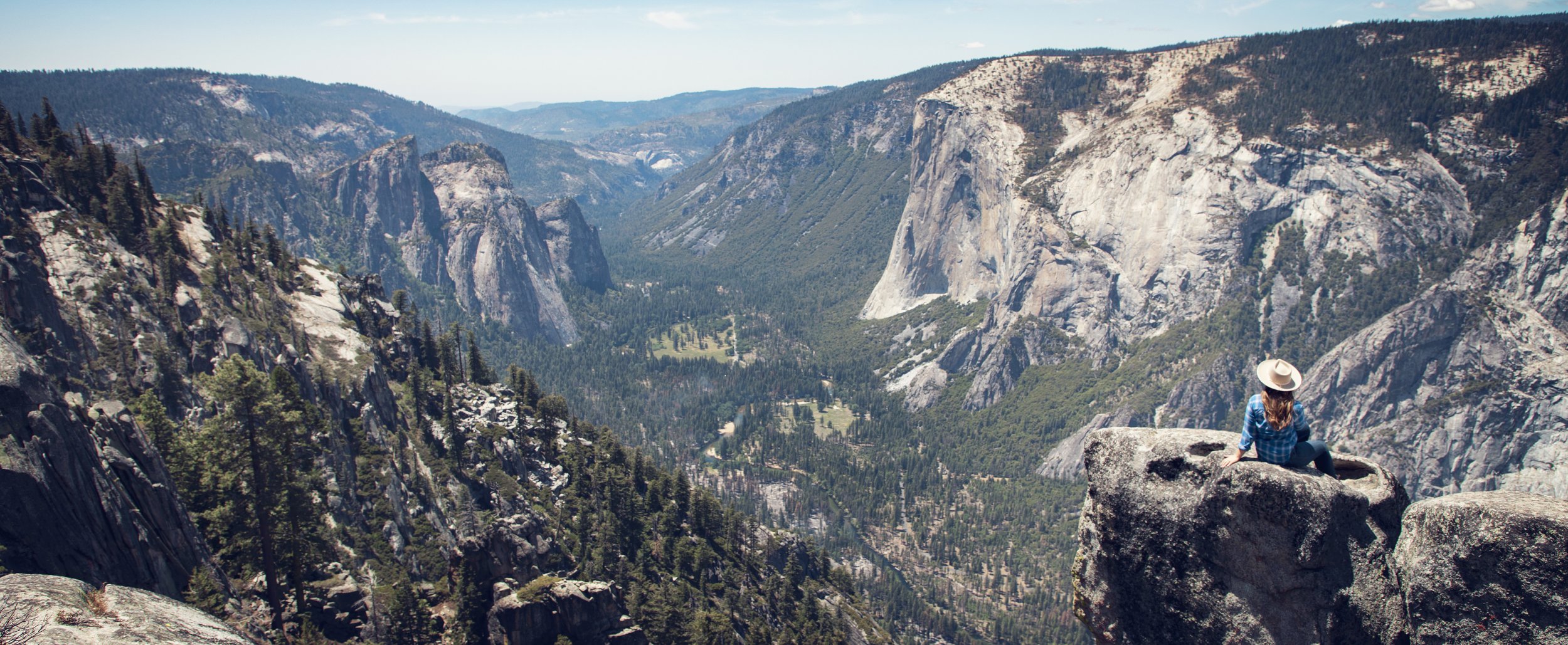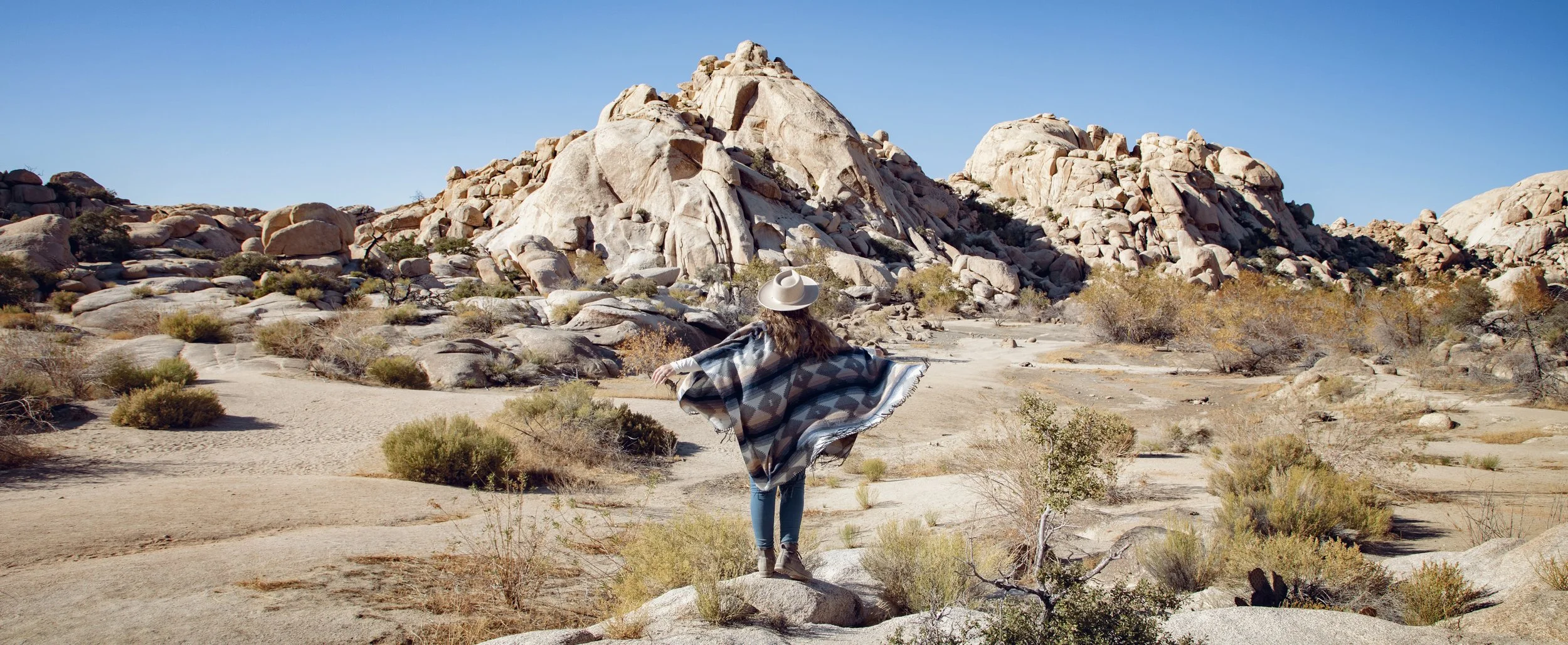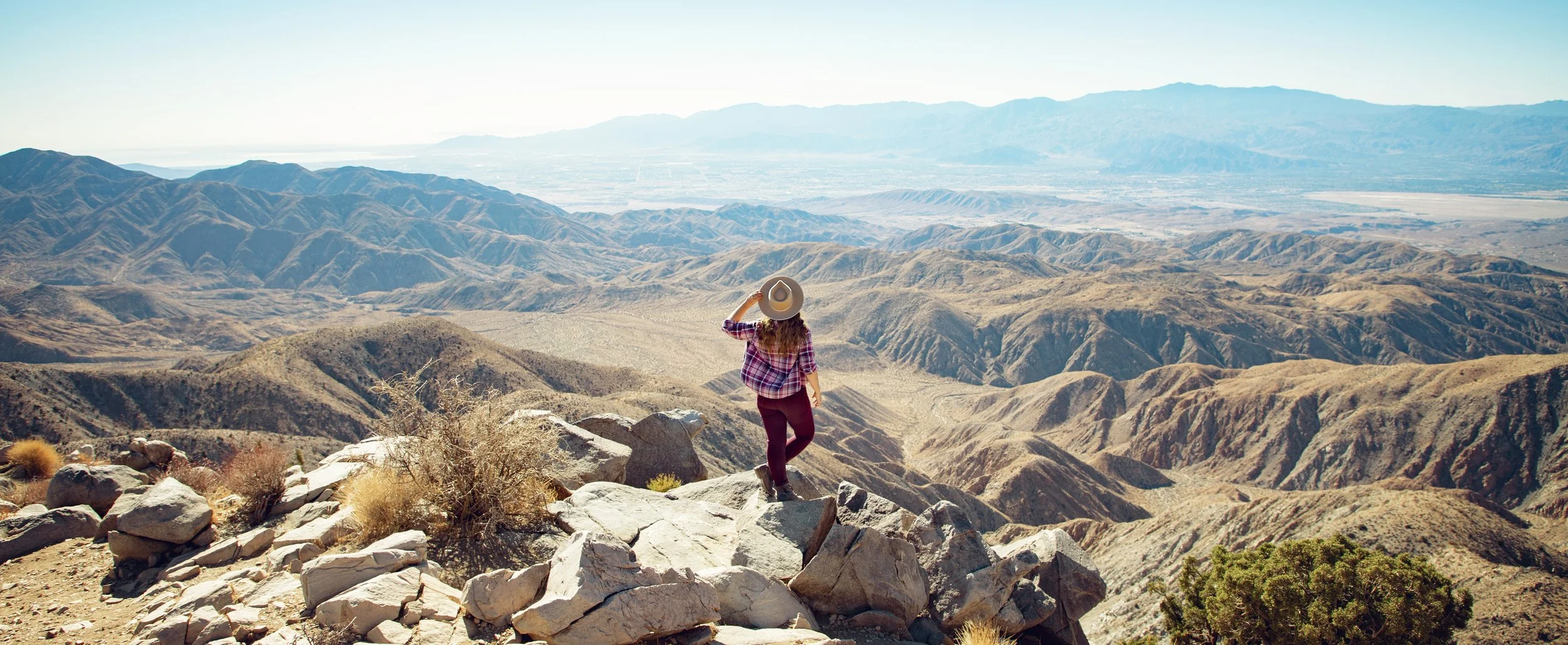Cottonwood Spring - Joshua Tree National Park
Sandy path leading to Cottonwood Spring
This week we’re back in Joshua Tree National Park, and if you thought the Fall colors in California were over, you’re in for a real treat. Today we’re exploring what is often referred to as one of Joshua Tree’s best kept secret spots…join me at Cottonwood Spring Nature Trail.
Trail view looking up at the giant palms
Location
Located near Mecca, California only seven miles from the southern entrance of the park, you’ll find a hidden treasure of giant palms at Cottonwood Spring Oasis, as well as a nearby campground just 1/2 a mile away. At times, up to 500 gallons of water a day can rise up to the surface of the earth here. The water-rich soil found here provides a rare spot inside the park for native fan palms, some of which are believed to be over 100 years old. The area is also home to the classic desert cottonwood trees.
Cottonwood Spring Trail
History
Cottonwood Spring was formed through earthquake activity, and for centuries local Cahuilla people called this area home. You can still clearly see the bedrock mortars they used along the trail here. Prospectors and miners also used the spring as a water stop traveling from Mecca to mines in the north. This spring area was first mentioned in a gold mine claim filed in 1875, and the abundant fan palms were first recorded around 1920.
Cahuilla Bedrock Mortar
Hiking
From the parking area you can reach the first giant palms in less than a tenth of a mile, and the 1.5 mile loop trail is often sandy and can be challenging to follow if you’re not familiar with the area, as it is minimally marked (but it is a gentle hike). For additional hiking you can continue and visit the remains of Moorten’s Mill. Another popular hike is Mastodon Peak…this 3 mile loop climbs over 400 feet through some incredible rock formations and passes the remains of Mastodon Mine and the Winona Mill Site. For a much bigger challenge, Lost Palms Oasis trail is a demanding 8 mile loop.
Mastodon Peak Trail
Know Before You Go
• There is very little shade on this hike, so always bring extra water and use wisdom when hiking. Summer temperatures often hover above 100º here.
• Entrance fees to Joshua Tree National Park are currently $30 per vehicle. Consider purchasing an America the Beautiful Annual National Parks Pass for $80, which grants you access to over 2,000 federal recreation sites for a 12 month period.
• Please be sensitive when exploring the great outdoors and remember the Leave No Trace Principles to help keep this special spot pristine, so that others may enjoy it for years to come.
• In the Spring you can often see wildflowers blooming along the path. By Summer the wash can be completely dried out. During the Fall you can enjoy surprisingly vibrant Autumn colors here.
• Sunrise & sunset are great times to see wildlife here, including big horn sheep…and this is one of the most popular spots in the park for birding.
• Consider visiting after a recent storm to see the spring area most active.
• Make sure to abide by all the signs & guidelines, as certain areas are closed to off trail public use and travel due to soil contamination, which can be hazardous to health.
Top 10 Joshua Tree Attractions
Jumbo Rocks & Skull Rock
Keys View
Barker Dam Nature Trail
Split Rock Loop Trail
Hall of Horrors
Cottonwood Spring
Cottonwood Trees & Fan Palms from the top of the trail
In Summary & Behind the Blog Video
Thanks so much for joining me this week at Joshua Tree National Park. For a virtual visit make sure to check out my Behind the Blog YouTube video below. Until next week I hope you find adventure and encouragement wherever you go!
Some of the links on this website are affiliate links. If you make a purchase through these links, we may earn a small commission at no extra cost to you. This helps in offsetting the cost of running this site so we can continue to provide you with free content to help you plan your next adventure.
If you enjoyed this post you might also like…





